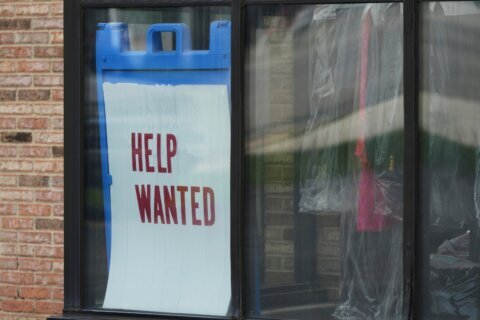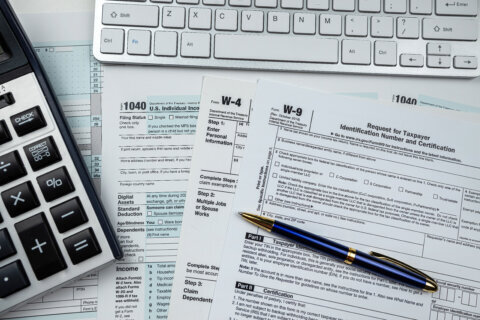Chris Balish hasn’t owned a car since 2005. After discovering that his massive SUV wouldn’t fit in his cramped apartment parking garage, he quickly sold the vehicle.
Balish, who was living in St. Louis at the time, figured out how to get to work on public transit and bicycle. “By the end of the month, I was like, ‘Wait a minute, that can’t be right. I have $800 in my bank account,'” says Balish, author of “How to Live Well Without Owning a Car: Save Money, Breathe Easier, and Get More Mileage Out of Life.” “I never looked back.”
Today, Balish lives in Los Angeles and maintains his car-free lifestyle. He gets around on his bike, public transit and with the occasional use of ride-sharing and car-rental services. “I have saved over $120,000 in cash since I gave up my car over 10 years ago,” he says. “Not owning a car gives [me] so much financial freedom.”
[Read: The Hidden Costs of Buying a Car.]
Balish isn’t alone in seeing the cost savings of car-free living. People who commute on public transit can save more than $812 per month, on average, compared to those who drive, according to the American Public Transportation Association’s January Transit Savings Report.
Sound surprising? Consider this: Transportation costs are the second-largest expense after rent or mortgage payments for American families, says Mantill Williams, director of advocacy communications for the American Public Transportation Association.
But car owners typically don’t recognize the full price of vehicle ownership because the costs add up incrementally — an insurance payment one week, an oil-change the next week. “Transportation costs get you little by little,” Williams says. “People never look at overall cost of transportation.”
Toying with parking your wheels for good? Here’s how to switch gears.
Learn to love the alternatives. Car-free folks are often “multimodal,” meaning they get around using several strategies, including walking, biking and public transportation.
“Once someone puts the keys down and becomes multimodal, then public transportation is going to become part of the mix, and you are go ing to be saving a lot of money,” Williams says.
Beyond that, Uber, Lyft and other ride-sharing services can fill in the gaps when there’s a long walk to the metro station or it’s late at night. Delivery services for groceries, dry cleaning and other goods can cut down on awkward errands. Bike-share services, available in cities like Chicago, New York and the District of Columbia, are another option for car-free residents. These services are “great ways to be able to start out biking without having to buy any equipment,” says Steve Taylor, communications manager at The League of American Bicyclists.
One nonfinancial benefit to the multimodal lifestyle is often a free workout, experts say. Balish cashed in on this perk when he first started riding his bike to work regularly. “I could see my abs,” he says. “I was in tremendous shape.”
[Read: Buying a Car? Say No to the 84-Month Loan.]
Commit to the lifestyle. If you’re going to go car-free full time, commit to living and working close to alternative forms of transit, be it a bus stop or a bike path. Balish lives in downtown Santa Monica, close to a range of public transit options and within a mile from his office, to ensure that he can get most places without a car.
Making that lifestyle call may mean putting some of the $800 you save monthly without a car toward more central housing. “It’s a bit of a trade-off,” Williams says. “If you don’t have the expense of a car, you can afford a [more] expensive place, or more convenient.”
Of course, urban centers have multiple neighborhoods with easy access to public transit. But residents of small or mid-size cities may have to make a more concerted effort to live somewhere practical without a car. Rural residents may have the toughest time ditching their wheels and may instead focus on scaling back on car usage instead of scrapping it entirely.
Williams points out that many smaller cities have recently invested in revitalizing downtown living spaces and public transit. Plus, smartphones, with their bus-tracking apps and train schedules, make the once-painful experience of suburban public transit more palatable.
Think about the investment. The fact is that a car, especially a brand-new one, loses value the moment you drive it off the lot. Could that money be better used renting inside the city, or better yet, invested in a retirement account, business venture or paying off high-interest debt?
Car-free fans also note that time spent on public transit or while biking is more productive than the minutes (or hours) spent behind the wheel of a car. Bus and train takers can use their time to read, study, do work or apply for jobs. And depending on the city and transit method, you may be able to reduce regular public transit costs by purchasing a monthly membership.
[See: Dear Younger Me: 12 Financial Truths We Wish We Knew Earlier.]
Consider scaling back. Sometimes a car-free lifestyle isn’t in the cards. Children, bad weather or rural living can throw a wrench in your car-less life. But multicar families can still save cash by ditching one of their automobiles, experts say. “If you can live with one less car, then you really are eliminating a huge cost,” Williams says.
While they won’t be totally car-free, families who ditch one car have one less car payment, plus they pay fewer insurance, gas and maintenance charges.
More from U.S. News
10 Ways to Invest in Driverless Cars
8 Purchases That Can Save You Hundreds or Thousands of Dollars
8 Ways to Tell If You’re in the Middle Class
How to Save Money By Ditching Your Car originally appeared on usnews.com







